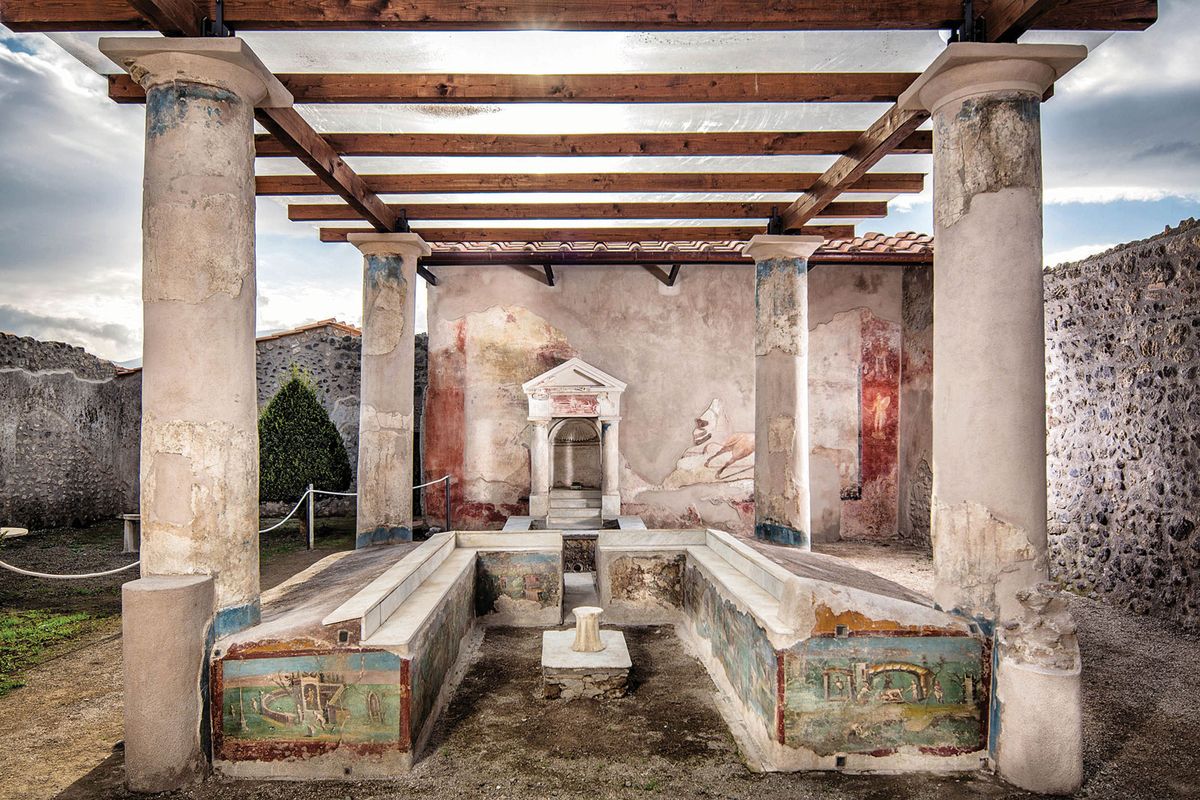The ancient Roman city of Pompeii was famously destroyed by the volcanic eruption of Mount Vesuvius in AD79. Now, sensors, infrared and satellite technology will be installed among the ruins to guard against the ravages of climate change, including heavy rainfall, strong winds and extreme changes in temperature. Under a new agreement with the civil engineering department of the University of Salerno, the archaeological park will develop a high-tech monitoring system that will eventually be rolled out throughout the 44-hectare excavated area.
The accord follows a decade of emergency restoration at Pompeii, spearheaded by its former director, Massimo Osanna. After a number of ancient structures collapsed in 2010 and 2011, prompting international concern, the European Commission launched the Great Pompeii Project, a €105m project co-funded by the EU and the Italian government to “preserve, maintain and improve” the site. The works, which secured the site and introduced regular maintenance for the first time, were completed by the end of 2020 following significant delays.
As part of the project, Pompeii launched an information system in 2015 to centralise its archaeological records and support monitoring and maintenance. Data is mapped across the site using a geographic information system.
Overseen by Osanna’s successor, Gabriel Zuchtriegel, the new monitoring agreement will upgrade the current system by integrating drones, sensors and infrared technology. This will provide a constant flow of data, transforming the current “static” platform, which provides a “snapshot in time”, into a “dynamic” system capable of assessing longer term changes, says Luigi Petti, the head of the University of Salerno research team. As a result, Pompeii’s on-site team of 55 restorers, builders, archaeologists and architects will be able to plan maintenance with greater precision. In the future, the university intends to integrate data from satellites operated by the Italian environmental research agency ISPRA, Petti says.
Anticipating emergencies
The three-year renewable partnership will involve recent Salerno graduates in a series of Pompeii-funded monitoring projects. The first results will need to be assessed before a schedule for the launch of the wider climate monitoring system can be determined, Zuchtriegel says.
Pompeii is not the first archaeological site to use technology to track the effects of climate change. In 2019, the Colosseum in Rome began developing a high-tech monitoring system that will be operative from next year. One aim is to “indicate the conservation activities and interventions [needed] to anticipate emergency situations”, says Alfonsina Russo, the director of the Colosseum. This “early warning system”, she says, will help protect the site against extreme weather that is placing archaeological structures under increasing stress.
Previous monitoring experiments have generated “worrying data” about the perils of climate change, Zuchtriegel says. A study launched in 2018 by the University of Salerno and the Paestum archaeological park, where Zuchtriegel previously served as director, applied sensors to the fifth-century BC Temple of Neptune. These showed that increasingly extreme weather is causing structures to deteriorate more quickly, he says.
The first project in the Pompeii-Salerno partnership started in September and will run until the end of 2022. A dozen Salerno students on six-month scholarships have installed low-energy sensors on the walls, ceilings, furnishings, floors, roofs and decorative items of structures located in Pompeii’s Regio VI subdivision, which is notable for buildings including the House of the Vestal Virgins and the House of Sallust. The study will act as a prototype to re-engineer Pompeii’s monitoring system.
The new projects will ultimately enable the archaeological park to forecast the human and financial resources it requires to confront climate change “in ten to 20 years from now”, Zuchtriegel says. But the challenge will be to ensure that data—however high-tech—helps rather than hinders ongoing maintenance work: “We are already swimming in data. If we are not careful, the new data will simply be another burden.”


